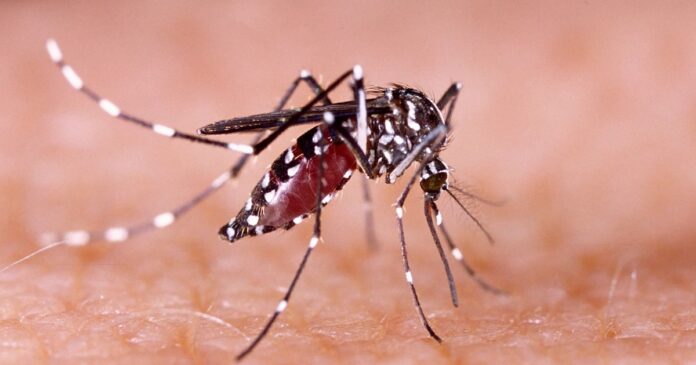The Unexpected Rise of Mosquitoes in Las Vegas: A Desert Dilemma
Mosquitoes in the Desert?
Las Vegas, known for its glitzy lights and bustling casinos, is perhaps the last place you’d expect to face a mosquito crisis. Once thought to be inhospitable to these blood-sucking pests, the desert city is now contending with an explosion in mosquito populations. What has changed?
Factors Behind the Surge
This increase can be attributed to several interlinked factors. Urban development has transformed the natural landscape, creating artificial bodies of water that serve as breeding grounds for mosquitoes. Meanwhile, climate change is altering weather patterns, making the environment more conducive to mosquito survival. Other contributors include insecticide resistance and genetic adaptations, leading to a more robust mosquito population in Southern Nevada.
A Case Study in Change
Las Vegas is not an isolated case; it exemplifies a broader trend across the desert Southwest and beyond. Warmer temperatures and shifting weather patterns are broadening the geographic range of mosquitoes. As we witness these changes in Las Vegas, the implications of a warming climate on mosquito populations are raising alarms far and wide.
The Public Health Threat
The increase in mosquito numbers is not merely an inconvenience. Mosquitoes carry the risk of transmiting dangerous diseases such as dengue fever and West Nile virus, posing significant public health threats. The Clark County area is already feeling the effects. Last year, there were 26 reported cases of West Nile virus, which follows a concerning trend that included an outbreak of 43 cases in 2019.
Adaptive Species
Here in Las Vegas, two key species have taken hold: Culex mosquitoes, which can carry West Nile virus, and Aedes aegypti mosquitoes, the primary carriers of dengue. Researchers at the University of Nevada, Las Vegas (UNLV) have been closely monitoring these species, noting alarming findings about their resistance to insecticides—a major concern for a city that thrives on tourism.
The Ticking Time Bomb
Dr. Louisa Messenger, an assistant professor at UNLV, describes the situation as a “ticking time bomb.” With over 48 million visitors to Las Vegas each year, a few mosquito bites could be enough to kickstart local transmission of diseases. The implications are staggering. As of 2024, the Centers for Disease Control and Prevention (CDC) recorded over 13 million dengue cases across North and South America, foreshadowing what might come for Las Vegas.
Explosive Growth of Aedes Aegypti
Data from the Southern Nevada Health District reveals a startling trend: the rapid proliferation of Aedes aegypti mosquitoes. Initially identified in just a few ZIP codes in 2017, they have now spread to an astonishing 48 different areas in the valley. These mosquitoes are particularly bothersome, as they are aggressive daytime biters, making them a constant nuisance.
Urban Development and Breeding Grounds
The urban landscape of Las Vegas has inadvertently created ideal breeding conditions for mosquitoes. Golf courses, artificial lakes, and even simple containers filled with rainwater become breeding grounds. Unlike Culex mosquitoes, which thrive near larger water bodies, Aedes aegypti prefer small, shallow sources of standing water—making them even harder to control.
Climate: A Contributing Factor
Climate change also plays a role in the burgeoning mosquito populations. Warmer temperatures can facilitate greater humidity and instability in precipitation patterns, creating environments that are even more favorable for mosquitoes. As Dr. Messenger notes, Las Vegas may serve as a prototype for what other regions may soon experience, given current climate trajectories.
Need for Coordinated Efforts
Despite the growing issue, Las Vegas lacks a centralized, coordinated abatement strategy for mosquito control. This has made it easier for mosquitoes to develop resistance to the insecticides currently in use. A more organized public health response is crucial. It would entail assessing effective chemicals and monitoring resistance patterns to prevent the further spread of these pests.
Staying Informed
The Southern Nevada Health District has been proactive in mosquito surveillance since 2004, meticulously tracking which mosquito species are present and where disease outbreaks occur. Public outreach initiatives aim to educate residents on identifying and eliminating potential breeding sites in their homes and how to protect themselves from bites.
An Ongoing Challenge
The situation in Las Vegas serves as a cautionary tale for other regions facing similar ecological shifts. With no signs of the mosquito problem abating, it’s clear that municipalities must focus on prevention and control measures to protect both residents and the millions of visitors who flock to the city each year.
This growing mosquito challenge is indeed multifaceted, requiring attention, research, and action to ensure that Las Vegas remains a safe destination for all.
